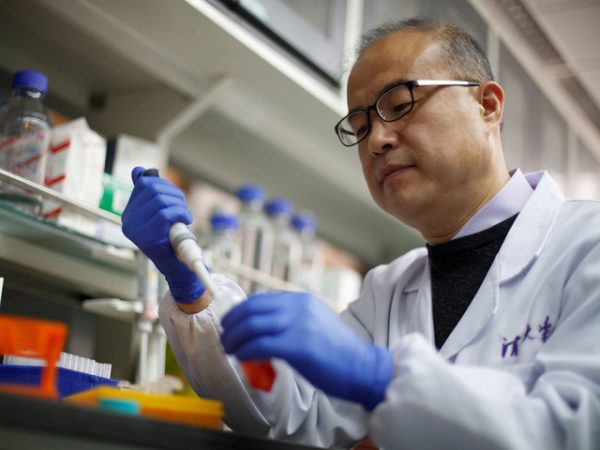In times like these, as a housebound world thirsts for entertainment, its newspapermen obviously have one paramount duty: to produce amusing listicles. This one didn’t start out amusing. It started with a survey of the clinical trials that researchers are cooking up to gather knowledge about the SARS-CoV-2 virus and COVID-19, the disease it causes.
If you are following the virus news closely, you will have heard at least something about the main attack strategies that the combined forces of research medicine are contemplating and testing. The big one is the anti-malaria drug chloroquine, which is thought promising by itself, or in other chemical forms, and possibly in drug cocktails, with the antibiotic azithromycin a favourite pairing.
In clinical-trial databases, chloroquine is a dominant subject of study right now, and its performance, according to anecdotes from COVID hot zones, is good enough that it is already being administered to countless thousands of patients. Other drugs offer hope for reducing the hospital burden from COVID-19. There are leading candidates among existing antiviral drugs, but it would be no exaggeration to say that almost everything on Earth with “-ivir” in the name is being looked at. The same goes for the monoclonal antibodies, the “-mabs.” If you are taking something for rheumatoid arthritis, there is probably a clinical trial in prospect for your drug.
Chloroquine is a dominant subject of study right now
The sheer magnitude of the global effort is breathtaking and reassuring. But I was interested in the dark horses — the less popular ideas for COVID-19 prevention and treatment. If we could tell in advance which drug, or tactic, or philosophy was bound to work on the new coronavirus, we wouldn’t need clinical trials. Who knows what out-of-the-way scholarly eccentric in China or Italy might end up becoming the Jonas Salk of COVID?
Here are some of the wilder things people are trying out, or thinking of trying if they can get test subjects to co-operate.
• Viagra. Maybe you suppose that a pill that induces erections isn’t likely to be useful in treating a respiratory disease. Well, smartypants, nobody thought a drug to prevent angina attacks would help anyone get an erection, but that’s how we got Viagra. Viagra and other drugs in its class are sometimes used off-label to dilate blood vessels in the lungs. As a long-term lung therapy Viagra has been a bust, but in acutely compromised, struggling patients … who knows? (You can add “who knows?” to all of these items, I suppose.)
• Horse chestnuts. Why are they called horse chestnuts, class? Because of their ancient folk use in treating horses with respiratory troubles. The nuts themselves contain dangerous poisons, but escin, an extract of their active ingredient, has already been considered as a treatment for bad veins.
• Nitric oxide (NO) gas. Not to be confused with nitrous oxide, which is N2O. In the 1990s nitric oxide was proved, amid general surprise and mirth, to be an important natural enzyme and neurotransmitter in mammals. When the endothelial cells in the blood vessels don’t produce enough NO, you end up with all kinds of vascular and metabolic problems. (Viagra works by making NO signalling in the body more efficient.) One U.S. trial proposal actually contemplates having health-care workers inhale NO prophylactically, before and after their shifts.
• Thalidomide. The name of the morning-sickness drug that inflicted birth defects on thousands in the 1950s and 1960s still inspires appropriate terror. But thalidomide is also on the WHO’s List of Essential Medicines —specifically, for its use in denying malignant tumours the ability to grow new blood vessels. It also interacts with the immune system and possibly inhibits scarring in lung tissue.
• Colchicine. Like escin, a natural plant extract long used in folk remedies. (Colchicum is the Latin term for autumn crocus.) You probably won’t have heard of it unless you have had gout, for which it is often prescribed. It’s relatively noxious stuff, and overdose happens even in clinical settings, but it has such a broad array of anti-inflammatory effects that you run out of fingers trying to count them. The Montreal Heart Institute is planning a large study of colchicine and COVID.

Thomas Peter/Reuters
I see I won’t have space to properly cover everything I took notes on. A Nanking hospital’s idea for a study of fecal transplantion for COVID-19 has been withdrawn. (The theory behind that one seems unusually hand-wavy, even by this article’s standards. Having said that, maybe you and I will be queueing for someone else’s poo by August.)
There are at least two proposals to try giving COVID-19 patients “Wharton’s jelly”: I will leave you to look that one up yourself, with an advance warning that you are unlikely to find it on the shelf at your neighbourhood grocer. And some researchers are thinking about vitamin C, because doctors and chemists can’t seem to resist dreaming of a killer app for vitamin C, but there is apparently a body of evidence that giving it intravenously might help reduce sepsis in hospital patients, if nothing else.
Please note: nothing in this article is advice of any kind. I am not endorsing any treatment, and I am not qualified to do that. I take no responsibility for the actions of readers who are tempted to gobble fishtank cleaner, or anything else, after reading this column. Be well.
• Twitter: colbycosh


